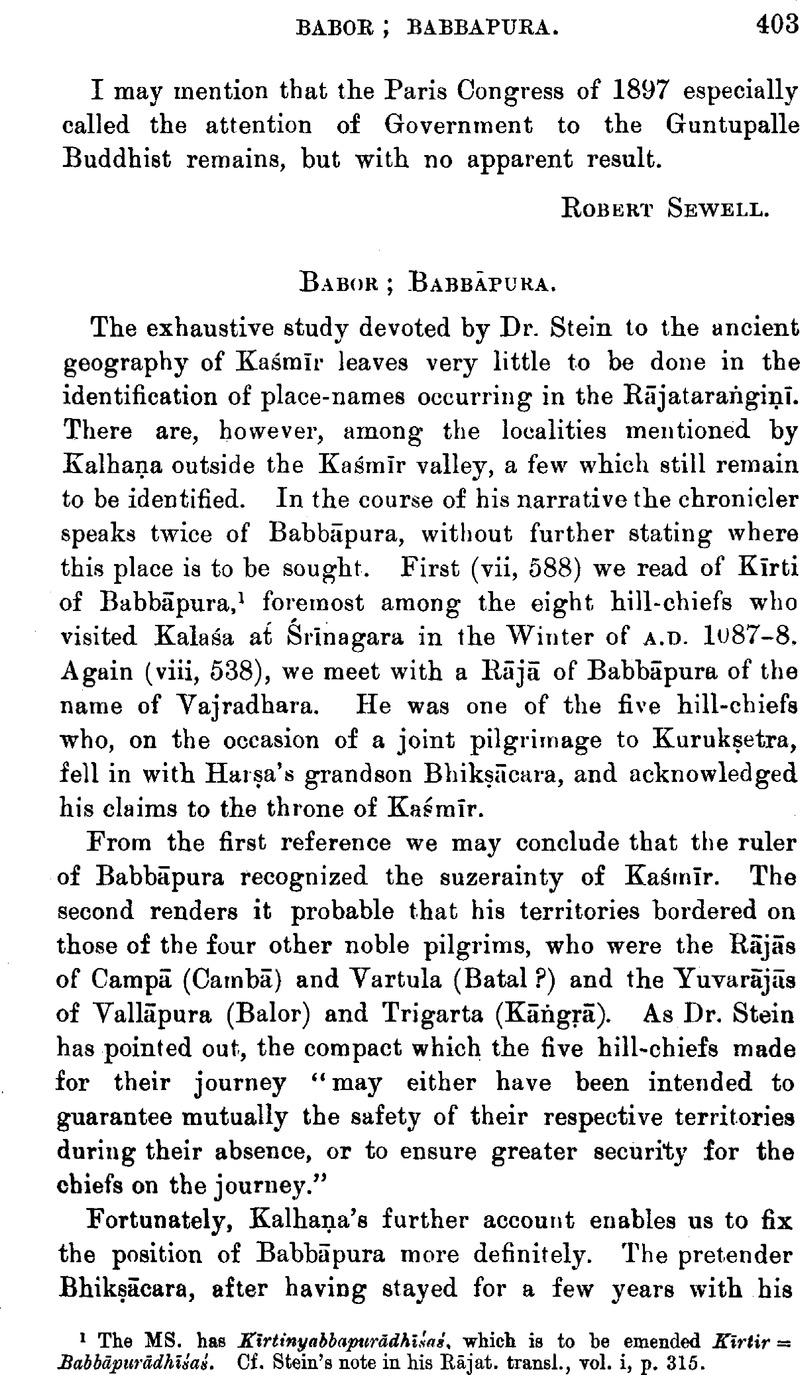Article contents
Abstract

- Type
- Miscellaneous Communications
- Information
- Copyright
- Copyright © The Royal Asiatic Society 1907
References
page 403 note 1 The MS. has Kīrtinyabbapurādhīśaś, which is to be emended Kīrtir = Babbāpurādhīśaś. Cf. Stein's, note in his Rājat. transl., vol. i, p. 315.Google Scholar
page 404 note 1 Jāsaṭa was the son of Asaṭa, whose sister Bappikā was Harsa's mother. The names of both Āsaṭa and Jāsaṭa occur in contemporaneous inscriptions.
page 404 note 2 For the account of Sussala's expedition, cf. Rājat. viii, 621–635. I have quoted Dr. Stein's translation.Google Scholar
page 405 note 1 Drew, F.: “A Geographical Account of the Jammu and Kashmir Territories” (London, 1875), p. 87.Google Scholar
page 405 note 2 Bühler, G., “The two praśastis of Baijnāth”: Epigr. Ind., vol. i, pp. 97ff.Google Scholar I am to add that the true date of these inscriptions is Śaka 1126 (A.D. 1204), and not Śaka 726 (A.D. 804) as has been hitherto supposed. Cf. Kielhorn, F., Ind. Ant., vol. xx (1891), p. 154.Google Scholar
page 406 note 1 Archæological Survey Report, 1902–1903, p. 268.Google Scholar
page 406 note 2 “Ancient Geography of India,” p. 133.Google Scholar
- 1
- Cited by




